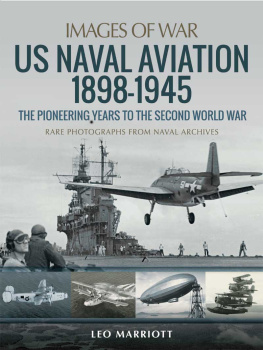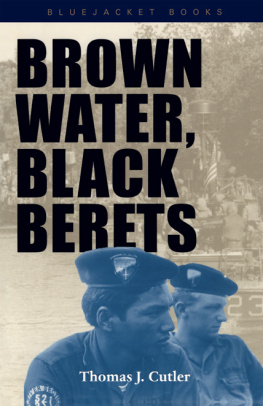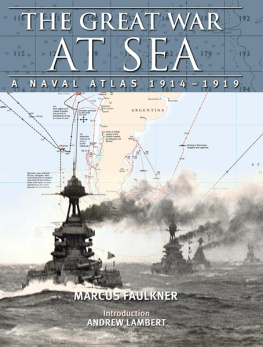
U.S. NAVAL INSTITUTE
Chronicles
For nearly a century and a half since a group of concerned naval officers gathered to provide a forum for the exchange of constructive ideas, the U.S. Naval Institute has been a unique source of information relevant to the nations sea services. Through the open forum provided by Proceedings and Naval History magazines, Naval Institute Press (the book-publishing arm of the institute), a robust Oral History program, and more recent immersion in various cyber activities (including the Naval Institute Blog and Naval Institute News), USNI has built a vast assemblage of intellectual content that has long supported the Navy, Marine Corps, and Coast Guard as well as the nation as a whole.
Recognizing the potential value of this exceptional collection, USNI has embarked on a number of new platforms to reintroduce readers to significant portions of this virtual treasure trove. The U.S. Naval Institute Chronicles series focuses on the relevance of history by resurrecting appropriate selections that are built around various themes, such as battles, personalities, and service components. Available in both paper and eBook versions, these carefully selected volumes help readers navigate through this intellectual labyrinth by providing some of the best contributions that have provided unique perspectives and helped shape naval thinking over the many decades since the institutes founding in 1873.

Naval Institute Press
291 Wood Road
Annapolis, MD 21402
2016 by the U.S. Naval Institute
All rights reserved. No part of this book may be reproduced or utilized in any form or by any means, electronic or mechanical, including photocopying and recording, or by any information storage and retrieval system, without permission in writing from the publisher.
Library of Congress Cataloging-in-Publication Data
Names: Cutler, Thomas J., 1947, editor of compilation. | United States Naval Institute, issuing body.
Title: The U.S. Naval Institute on Vietnam: coastal and riverine warfare / Thomas J. Cutler.
Other titles: U.S. Naval Institute on Vietnam, coastal and riverine warfare
Description: Annapolis, Maryland: Naval Institute Press, [2016] | Includes index.
Identifiers: LCCN 2016005088 | ISBN 9781682470497 (ebook)
Subjects: LCSH: Vietnam War, 19611975Riverine operations, American. | United States. Mobile Riverine ForceBiography.
Classification: LCC DS558.7 .U48 2016 | DDC 959.704/345dc23 LC record available at http://lccn.loc.gov/2016005088

 Print editions meet the requirements of ANSI/NISO z39.481992 (Permanence of Paper).
Print editions meet the requirements of ANSI/NISO z39.481992 (Permanence of Paper).
24 23 22 21 20 19 18 17 16 9 8 7 6 5 4 3 2 1
First printing
Table of Contents
Guide
CONTENTS
BECAUSE THIS BOOK is an anthology, containing documents from different time periods, the selections included here are subject to varying styles and conventions. Other variables are introduced by the evolving nature of the Naval Institutes publication practices. For those reasons, certain editorial decisions were required in order to avoid introducing confusion or inconsistencies and to expedite the process of assembling these sometimes disparate pieces.
Gender
Most jarring of the differences that readers will encounter are likely those associated with gender. A number of the included selections were written when the armed forces were primarily a male domain and so adhere to purely masculine references. I have chosen to leave the original language intact in these documents for the sake of authenticity and to avoid the complications that can arise when trying to make anachronistic adjustments. So readers are asked to translate (converting the ubiquitous he to he or she and his to her or his as required) and, while doing so, to celebrate the progress that we have made in these matters in more recent times.
Author Biographies
Another problem arises when considering biographical information of the various authors whose works make up this special collection. Some of the selections included in this anthology were originally accompanied by biographical information about their authors. Others were not. Those biographies that do exist have been included. They pertain to the time the article was written and may vary in terms of length and depth, some amounting to a single sentence pertaining to the authors current duty station, others consisting of several paragraphs that cover the authors career.
Ranks
I have retained the ranks of the authors at the time of their publication. As noted above, some of the authors wrote early in their careers, and the sagacity of their earlier contributions says much about the individuals, about the significance of the Naval Institutes forum, and about the importance of writing to the naval servicessomething that is sometimes underappreciated.
Other Anomalies
Readers may detect some inconsistencies in editorial style, reflecting staff changes at the Naval Institute, evolving practices in publishing itself, and various other factors not always identifiable. Some of the selections will include citational support, others will not. Authors sometimes coined their own words and occasionally violated traditional style conventions. Bottom line: with the exception of the removal of some extraneous materials (such as section numbers from book excerpts) and the conversion to a consistent font and overall design, these articles and excerpts appear as they originally did when first published.
THIS PROJECT would not be possible without the dedication and remarkable industry of Denis Clift, the Naval Institutes vice president for planning and operations and president emeritus of the National Intelligence University. This former naval officer, who served in the administrations of eleven successive U.S. presidents and was once editor in chief of Proceedings magazine, bridged the gap between paper and electronics by single-handedly reviewing the massive body of the Naval Institutes intellectual content to find many of the treasures included in this anthology.
A great deal is also owed to Mary Ripley, Janis Jorgensen, Rebecca Smith, Judy Heise, Debbie Smith, Elaine Davy, and Heather Lancaster who devoted many hours and much talent to the digitization project that is at the heart of these anthologies.
IT IS PROBABLY FAIR TO SAY that most Americans do not realize that the U.S. Navy and Coast Guard served in-country (as opposed to serving on ships off the coast or in aircraft over North Vietnam) during the Vietnam War. Considering that U.S. service personnel topped a half-million at the height of the war, and the Navy and Coast Guard combined never exceeded 40,000 at any given time, this in-country participation is proportionally very small. Yet over the course of the war, nearly two million Sailors and Coast Guardsmen did indeed serve in South Vietnam, and did so in a wide variety of ways. Some gave their lives or their limbs in that service.
While Navy participation in the war included construction battalions (SeaBees), SEALs, advisors to the South Vietnamese navy, and some others, a significant number served in the rather iconoclastic realms of coastal and riverine warfare. Often generically lumped under the semi-descriptive sobriquet of brown water navy, four different task forces were organized for the different missions deemed necessary during the course of the war. TF115 served as the Coastal Surveillance Force (Operation Market Time); TF116 was the River Patrol Force (Operation Game Warden); TF117 worked with the Army as the River Assault Group (a component of the joint Mobile Riverine Force); and TF194 was formed later in the war to carry out a new strategy known as Operation SEALORDS. These different groups performed different but related tasks that contrasted sharply with those of the so-called blue-water navy.











